Most fitness trainers and exercise enthusiasts agree that the push-pull-legs routine is worth doing. When you want a full-body workout that trains your upper body pulling and pushing muscles as well as your legs, the push-pull legs routine (PPL) is the way to go. Here’s your complete guide to the push, pull, and full body workout to maximize your fitness potential.
What is the push-pull legs routine?
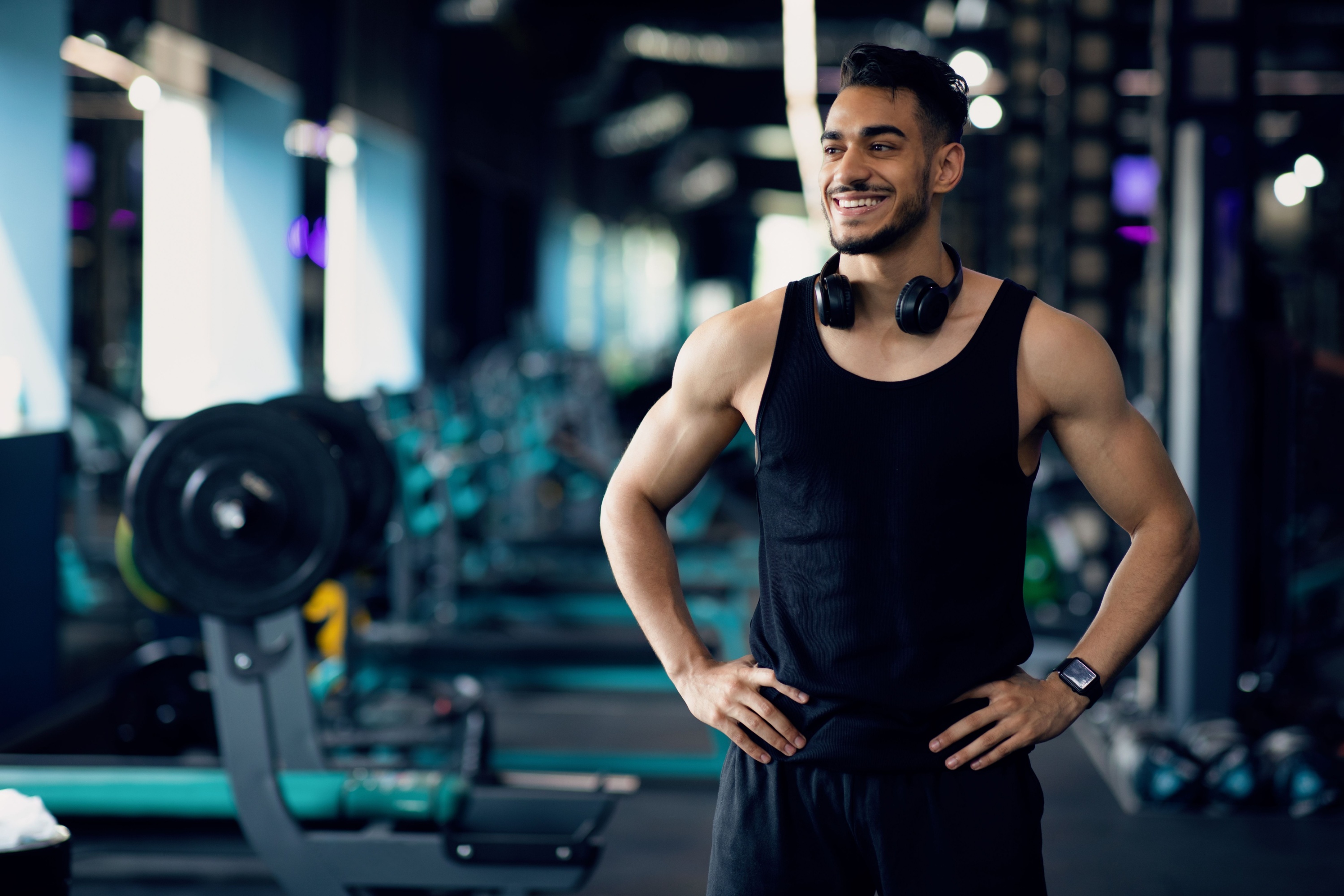
The push-pull legs routine is a full-body workout format designed to ramp up muscle growth in nearly every muscle group. On certain days of the week, you train your upper-body pushing muscles. On another day, you only train your upper-body pulling muscles. Finally, on a separate day, you only train your legs and your lower body. You should give each muscle group sufficient time to recover after every session.
Most people strive to hit each session twice weekly, while others aim for once weekly.
For example, you might try:
- Day 1 – pushing muscles
- Day 2 – pulling muscles
- Day 3 – legs
- Day 4 – rest
- Day 5 – pushing muscles
- Day 6 – pulling muscles
- Day 7 – legs
Why are push-pull leg routines so popular?

Push-pull leg routines are popular because they’re an organized way to boost muscle mass in different areas. Most fitness experts agree that PPL workouts are one of the best ways to target muscle groups in your entire body. Training six days a week is optimal, but you should still feel results if you’re only doing three days a week.
Try to make sure you’re training both your anterior and posterior chains in your legs on leg day.
Are PPL routines effective?

PPL routines are effective and simple to understand. Following this format ensures you’re targeting your upper body and lower body as well as your pushing and pulling muscles. You use your pushing and pulling muscles every day, from pushing the grocery cart to pulling open the door or pulling the bed sheets on the mattress.
Who should do PPL workouts?

Whether or not PPL workouts are the right choice for you depends on several factors, such as your fitness level, equipment access, and schedule. There are plenty of benefits, but some busy people might be unable to dedicate three to six days a week to PPL. Beginners are best starting with three days a week and working your way up over time. Ask your healthcare provider or
Best push exercises for your push-pull workout routine
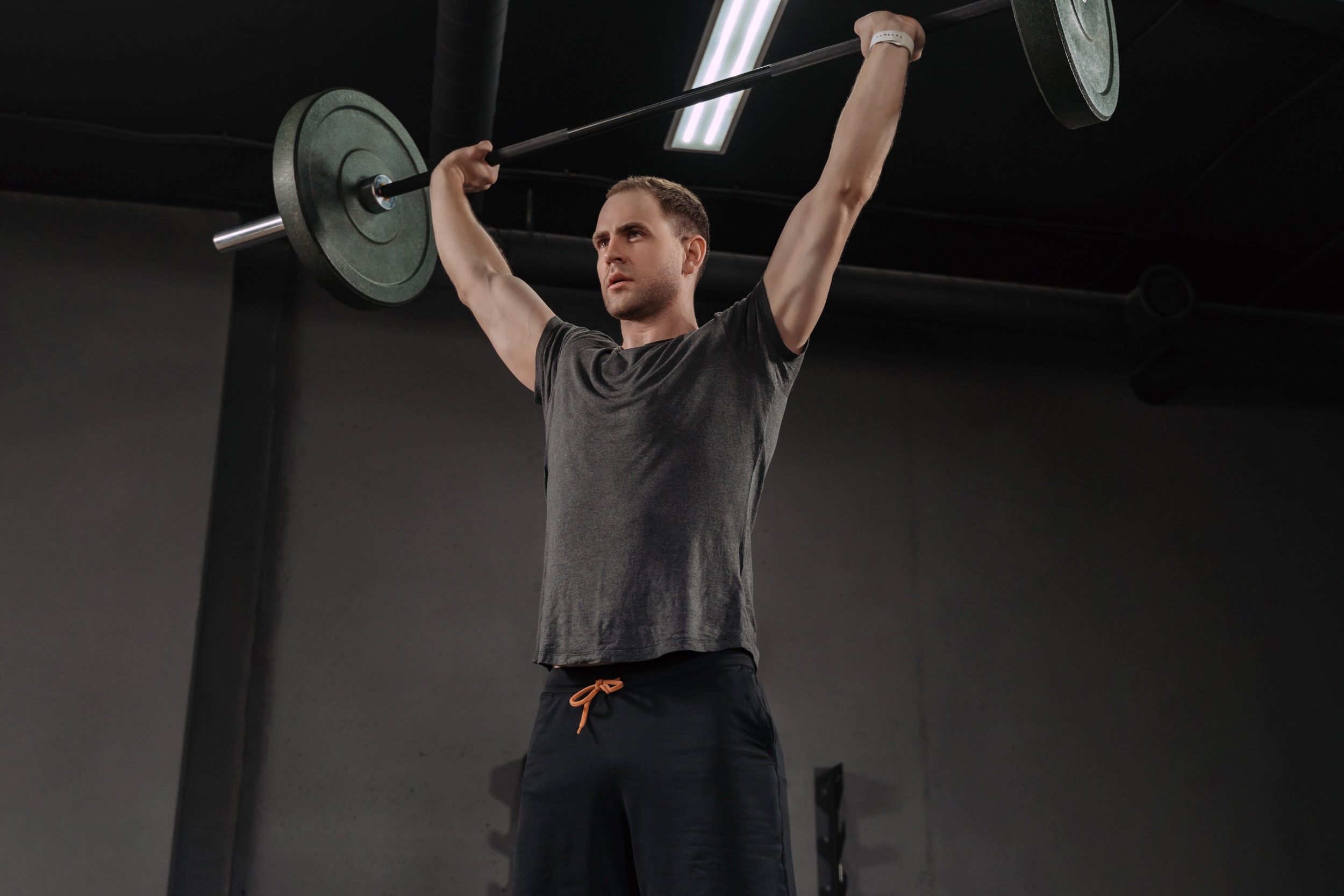
You use your pushing muscles like your chest, triceps, and shoulders to push an object away from your body or to press or push your body away from an object. Compound exercises like bench presses and isolation exercises like lateral raises are among the best pushing movements.
Bench press
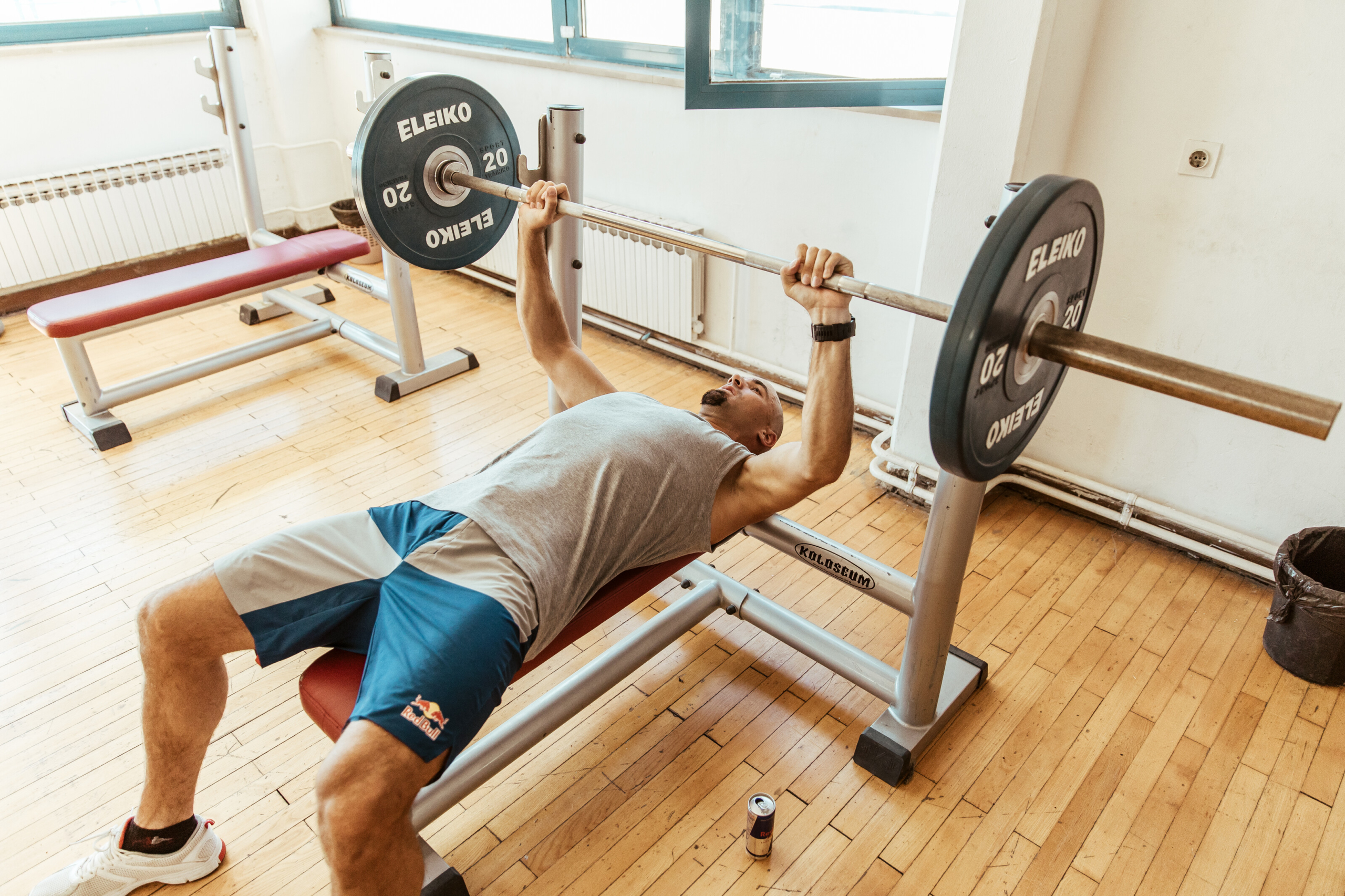
The bench press strengthens your front deltoids, chest, and triceps. Studies show that 2-3 months of bench press training resulted in a 10-20% boost in chest muscle thickness. The classic bench press is a compound movement that supports healthy bones.
How to do a bench press:
- Lie on a flat bench and grip the barbell a little wider than the width of your shoulders.
- Press your feet into the ground, take a deep breath, and unrack the bar with an overhand grip.
- Carefully bend your elbows and lower the bar until it touches your chest.
- Push the bar back up and straighten your arms while you’re exhaling.
- Take another deep breath and repeat for the desired number of reps.
Military press

The military press is another key compound exercise to add to your push day. Hoisting the barbell up overhead works your deltoids, traps, pecs, and more. This exercise prompts you to focus on your balance, range of motion, and strength.
How to do a military press:
- Stand with your feet about shoulders-distance apart.
- Grip the barbell with your hands a little wider than shoulder-width apart and your palms facing down.
- Squeeze your shoulder blades, glutes, and abs. Your knees should be slightly bent.
- Lift the weight up to your shoulders and make sure your forearms are straight and perpendicular to the ground.
- Engage your core and push the barbell up vertically over your head, straightening your arms.
- Hold the position for a moment.
- Carefully lower the weight back down to your shoulders.
- Repeat for your desired number of repetitions.
Push press

Develop your full body power with the push press — an overhead press exercise where you start with a quarter squat. You use the momentum from the squat to press the bar up overhead. You’ll work your triceps, pecs, traps, and deltoids. Most people can lift heavier weights with the push press compared to the standing overhead press.
How to do a push press:
- Adjust the height of the bar so it’s level with your collarbone.
- Face the bar and grip the bar with your palms facing forward slightly wider than shoulders-distance apart.
- The bar should be resting against the front of your shoulders in the starting position.
- Brace your core and inhale.
- Slightly bend your knees and forcefully push the bar up overhead, using the momentum from the squat to help you press the bar straight up.
- Return the barbell back to the starting position with control.
- Repeat for your desired number of reps.
Lateral raise

The lateral raise is one of the most superior shoulder isolation exercises for push day. You can target your lateral deltoids and shoulder muscles. All you need is dumbbells, a resistance band, or a cable machine.
How to do a lateral raise with dumbbells:
- With your arms by your sides, hold one dumbbell in each hand and slightly lean forward into the starting position.
- Slowly lift the dumbbells outwards until your arms are straight out by your sides, your upper arms are parallel with the floor, and you’re standing with your back straight.
- Slowly lower the dumbbells back to the starting position.
- Repeat for your desired number of reps.
Best pulling exercises for your push-pull workout routine

The pull day part of the PPL format targets your pulling muscles, including your biceps, traps, rear deltoids, lats, and lower back. As always, it’s optimal to include both isolation and compound exercises each day.
Pull-ups
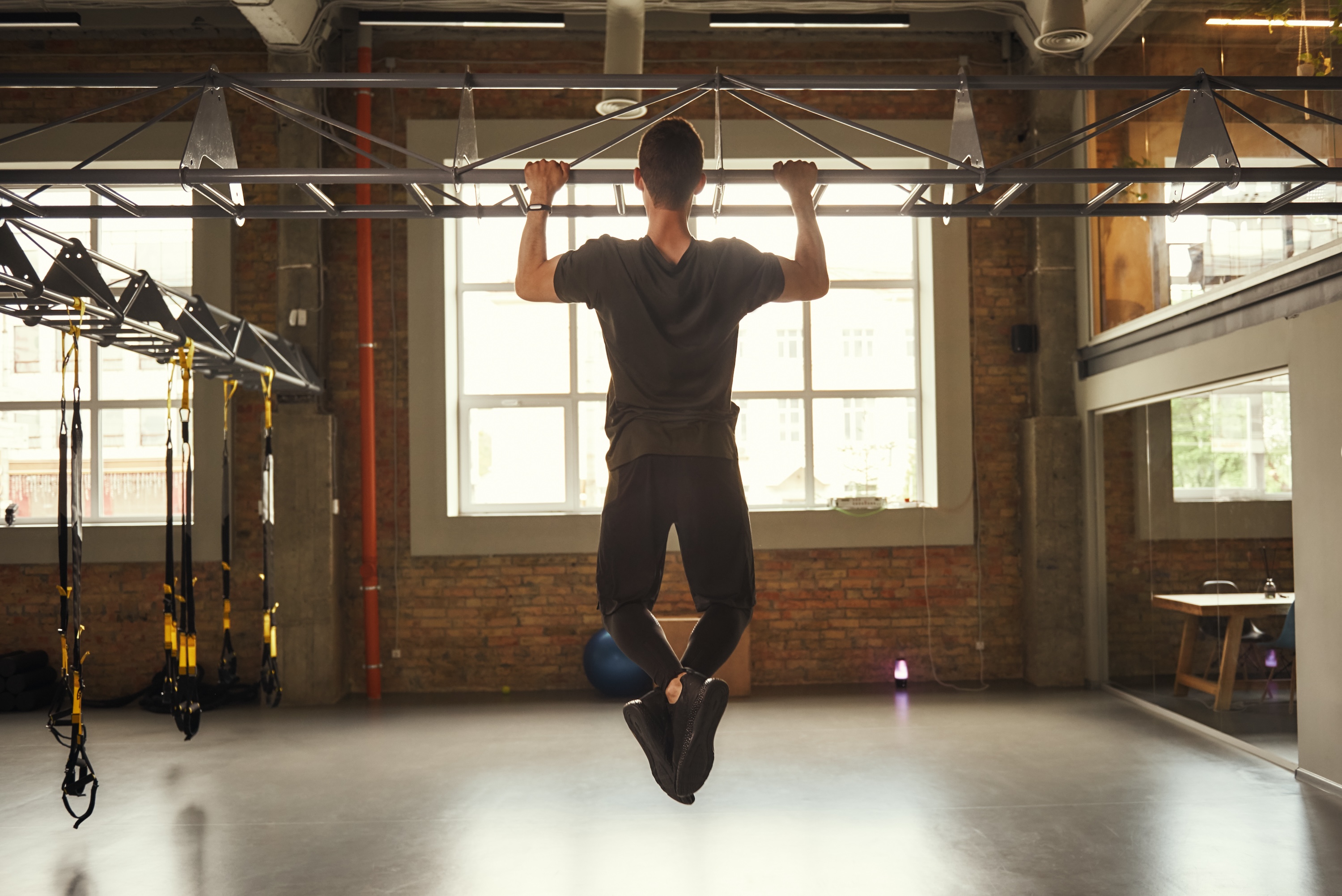
Most people are familiar with the good old-fashioned pull-up. This pulling exercise is popular with weightlifters because it works every primary muscle in your back. Pull-ups improve your grip strength and overall fitness level.
How to do a pull-up:
- Grip the pull-up bar with your hands shoulder-distance apart.
- Pull your entire body up to the bar until your chin is level with or just over the bar.
- Lower yourself back down with control until you reach the starting position.
- Repeat for your desired number of reps.
Lateral pulldown

With lateral pulldowns, you use your pulling muscles to pull the cables or bar down to your chest. Lateral pulldowns work your lats, rear deltoids, shoulders, biceps, and grip. This classic exercise improves your posture, grip strength, and athletic performance.
How to do a lateral pulldown:
- From a seated position, grip the bar with a wide overhand grip (slightly wider than shoulders-distance apart).
- Keep your chest up and pull the bar down towards your chest.
- You should feel your shoulder blades squeezing together as the bar reaches your chest.
- Slowly release the bar back up.
- Repeat for your desired number of reps.
Dumbbell rows

The dumbbell row or the bent-over row fully engages your biceps and lats as well as the bigger muscles in your back. You hinge forward at your hips in the starting position. Try to keep your lower body and torso strong and stationary when performing this exercise.
How to do a dumbbell row:
- Start in a lunge position with your left foot forward and your right foot back.
- Hold the dumbbell in your right hand.
- Lift or pull the weight up to your chest, making sure your elbow is bent at a 90-degree angle.
- Try to engage your core throughout this movement.
- Lower the weight back down.
- Repeat for your desired number of reps.
Cable row

The seated cable row is an excellent choice for all weightlifters when you want to improve posture and strengthen your back muscles. Seated cable rows mostly target your latissimus dorsi while also training other upper back muscles like your traps, posterior deltoids, and rhomboids.
How to do a seated cable row:
- Sit on the bench and make sure your knees are bent, and your feet are on the foot pads.
- Keep your spine neutral and your torso upright.
- Hinge forward at the hips and extend your arms to grab the attachment.
- Bring your torso back to the upright starting position and engage your core.
- Pull the handle and weight back toward your lower chest. Try to keep your shoulder blades together and your back straight.
- Hold the position for a moment.
- Extend your arms to move the cable back to the starting position.
- Repeat for your desired number of reps.
Top leg exercises for your push-pull legs workout routine

You don’t want to skip leg day because your legs have some of your largest muscles. Your legs carry you around all day, every day, so it’s important to build leg strength. Leg workouts can prompt the release of key hormones like testosterone. Here are some of the top leg exercises for your push-pull workout routine.
Hip thrust

As the name suggests, with hip thrusts, you thrust your hips up into the air in a similar way to the glute bridge. The difference is your upper back and shoulders are elevated with the hip thrust, which allows for greater hip flexion.
How to do a hip thrust:
- Sit on the floor with your feet a little wider than hips-distance apart and your knees bent.
- Your upper back should be elevated, resting on the edge of the weight bench.
- Hold on to the bar and place it across your hips.
- Squeeze your glutes and engage your core. Don’t use your arms to lift the bar.
- Press the bar up until your body forms a straight line from your shoulders to your hips and knees.
- Slowly lower the bar back down to the starting position, where your hips are a few inches up off the floor.
- Repeat for your desired number of reps.
Kettlebell swing

The kettlebell swing originated in Russia, and over the years, it’s become a popular calorie-burning CrossFit movement. You crouch down, hold a kettlebell, and swing it in a pendulum motion.
How to do a kettlebell swing:
- Stand with your feet about shoulders-distance apart while holding a kettlebell with both hands and your arms straight down. Your palms should be facing toward you.
- Bend your knees and engage your core.
- Carefully swing the kettlebell back and down between your legs to start to build momentum.
- Push your hips forward so your body is in more of a standing position, and use this momentum to start swinging the kettlebell up to your chest level or higher.
- Repeat the movement for your desired number of repetitions.
Deadlift
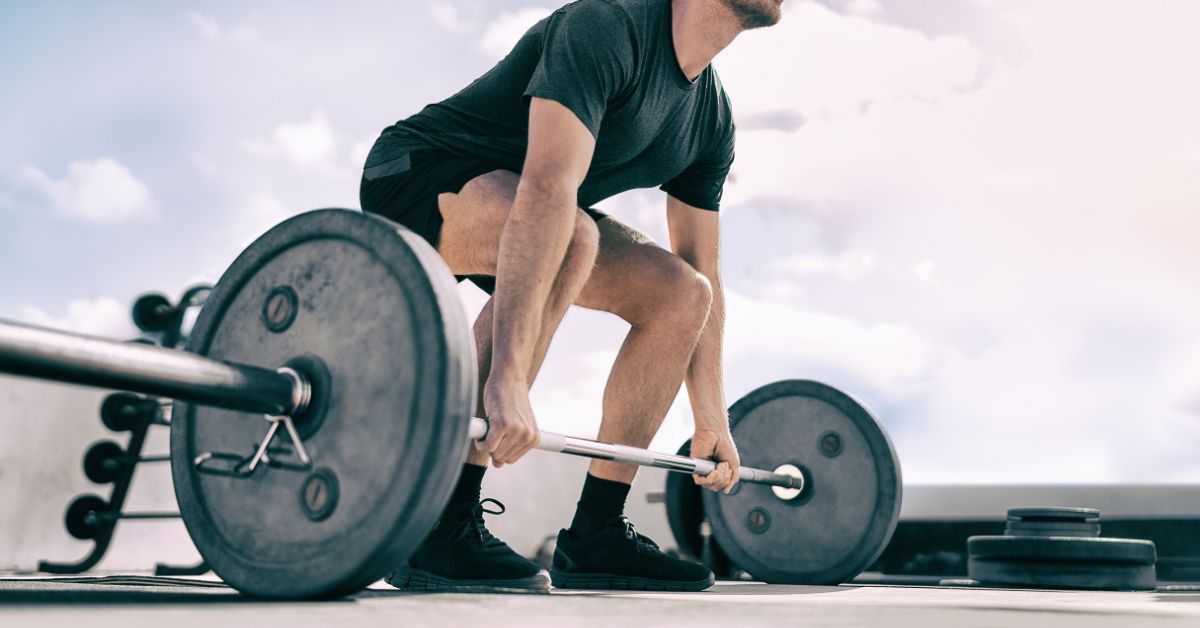
The deadlift is a compound exercise that works your legs, knees, hips, ankles, shoulders, back, and wrists. Adding the deadlift to your leg day boosts your leg power and bone density. Your quad muscles at the front of your thighs get a serious workout.
How to do a deadlift:
- Stand with your feet about hips-distance apart and with the bar over the middle of your feet.
- Lean forward and grip the bar with an overhand grip.
- Try to make sure your shoulders are pulled back and your arms are straight.
- Brace your core and lift the bar.
- Pull the bar up close to your body until you’re standing straight.
- Carefully lower the bar down to the ground.
- Repeat for your desired number of reps (be careful not to overdo it, as the deadlift is a fatiguing exercise).
Bulgarian split squat
The Bulgarian split squat is renowned for powering up your leg muscles. This exercise might also be called the rear-foot elevated split squat because it’s a version of a single-leg split squat where your rear foot is elevated. You’ll work your quadricep muscles in your thighs along with your glutes, calves, core, hamstrings, and adductors.
How to perform a Bulgarian split squat:
- Start by standing in front of a step, chair, or bench facing away from the step with your feet about hips-distance apart. You should be about two feet away from the step.
- Lift your right leg and place the top of your right foot on the step.
- Try to make sure your feet are still about hips-width apart and engage your core.
- Bend your left knee and lower yourself down as if you’re moving down into the lunge position.
- Pause for a moment at the bottom of the movement.
- Drive back up to your starting position with control.
- Repeat for your desired number of repetitions before switching to the other leg.
Push pull legs top tips
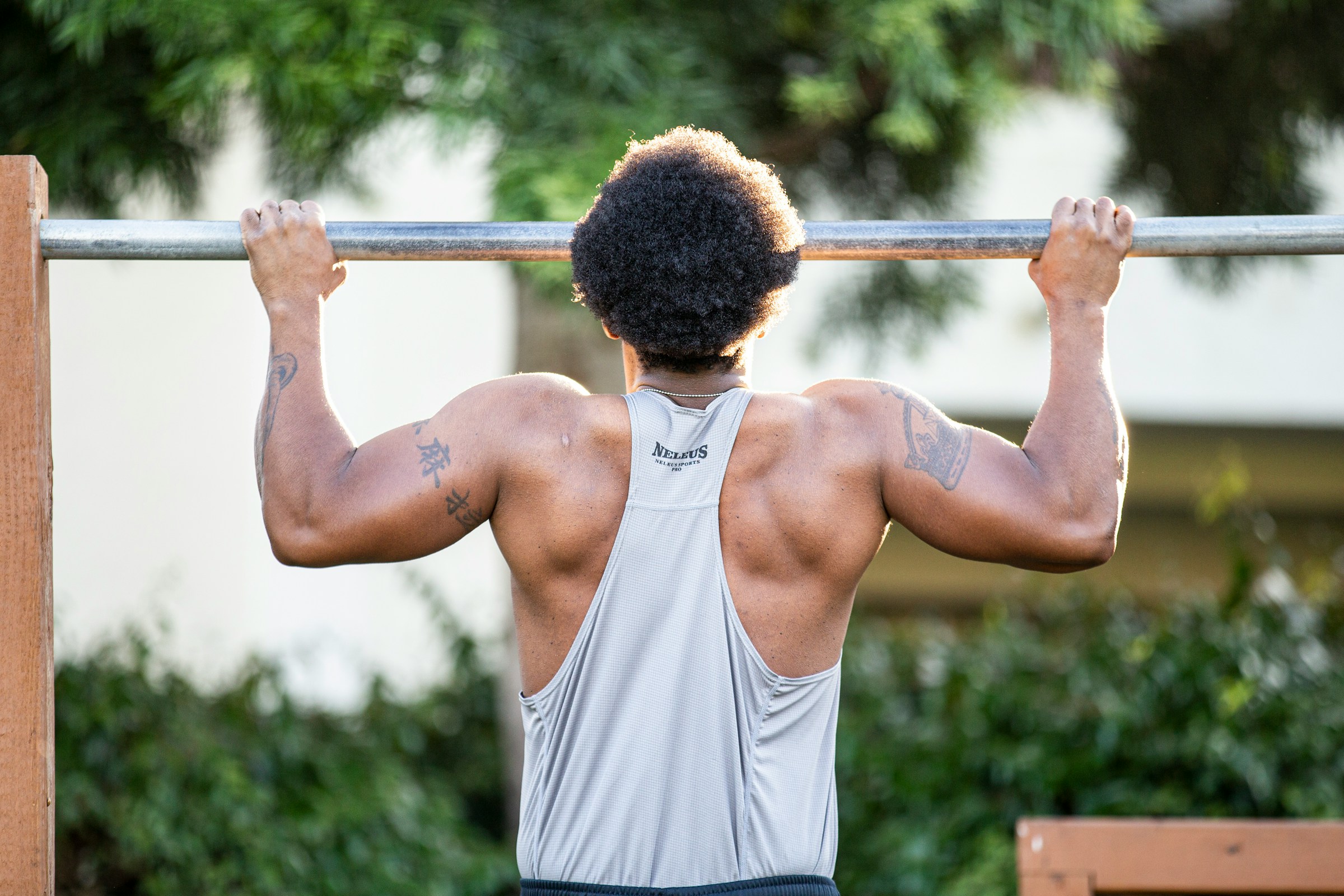
If you’re wondering whether to dedicate 3 or 6 days a week to PPL, the answer is it depends on the individual. If you have more advanced fitness goals, you should aim for six days a week; however, if you’re a beginner and just trying out PPL, it’s best to aim for three.
Work on perfecting your form before adding in more days and more advanced exercises. After one or two months, most people choose to switch up the PPL routine and try something else.
Top muscle-building exercises

Here are some of the top classic muscle-building exercises that deserve a place in your workout routine:
- Deadlift
- Bench press
- Pull-up
- Squat
- Overhead press
- Push-up
- Dumbbell fly
- Bicep curl
- Bent-over row
- Seated cable row





